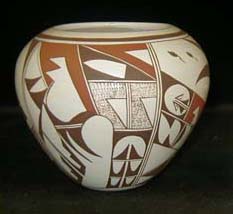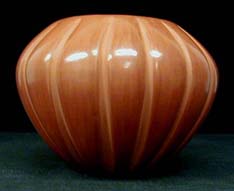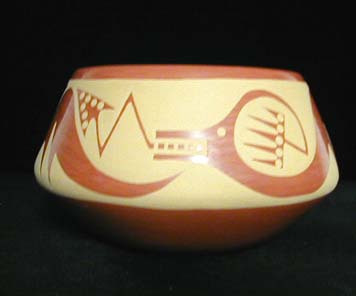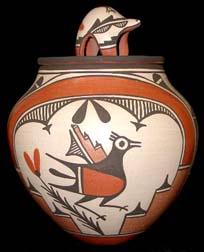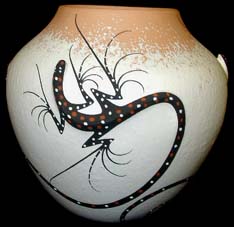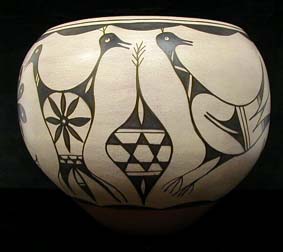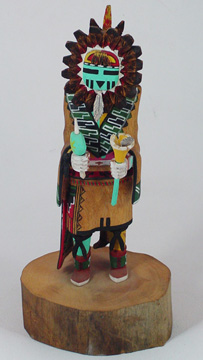Andrew Sahmie Squash Hopi Kachina Doll
The kachina:
This figure, the Squash or Patung kachina is a favorite among many collectors and appears primarily on First Mesa as a runner. It is thought that he may have derived from Zuni. Here is is depicted with flowers in both hands, but generally appears with a set of yucca whips in one hand.
As a "runner," the Patung belongs to a class of kachinas who are not dancers but rather run races with the men and boys of the village. "They come in the late spring, either as a group or as individuals, during a pause in a Mixed Dance or Plaza Dance.
Usually they will select one end of the Plaza and , assembling there, will endeavor to have an individual race them. If there are many runners, or Wawarus, there will be a great churning about with one or another racing down the length of the Plaza and other prancing up and down to ready themselves for the coming contest.
Quite often they will lure some unwary clown into racing and will immediately catch the hapless individual and perpetrate their peculiar form of punishment on him. They quickly tire of this and will gesture or hold up a reward to some young man in the crowd of bystanders.
If he accepts, they will allow him about ten feet of space in which he can move about as he pleases. But the minute he leaves the area he runs as if instant disaster were behind him, and it usually is, for some of the punishments are quite unpleasant.
Win or lose, he will receive payment with some kind of food from these racers. No one is safe from the oldest man to the youngest boy; all, including white members of the audience can receive the attention of these kachinas. The kachinas are expected to pay for whipping the young men, and this they do by sending water when it is needed for germinating the crops."
- Barton Wright, Kachinas: a Hopi Artist's Documentary (218)
The Carver:
Andrew Sahmie was born in 1960 and is a member of the Corn Club in First Mesa. (Polacca) Arizona. He is the great, great, grandson of Hopi pottery matriarch, Nampeyo, and the husband of Kachina carver Ida Sahmie. Like many of of the Hopi carvers, he is self-taught in the art, working from trial and error, and watching his older brothers, Finkle and Randal Sahmie.
Andrew has een carving steadily since 1990, and has developed outstanding refinement in his work. One only has to look at the crook of his fingers in his Kachinas to appreciate his attention to detail in his work.
Creative individuals surround Andrew; his mother, Priscilla Namingha, and his Navajo wife, Ida Sahmie, as well as his first cousins, Steve Lucas and Dan Namingha are all award winning artists.
Item No.: KD.0066
Artist: Andrew Sahmie
Size: 13 1/2 in H
Price: 990
